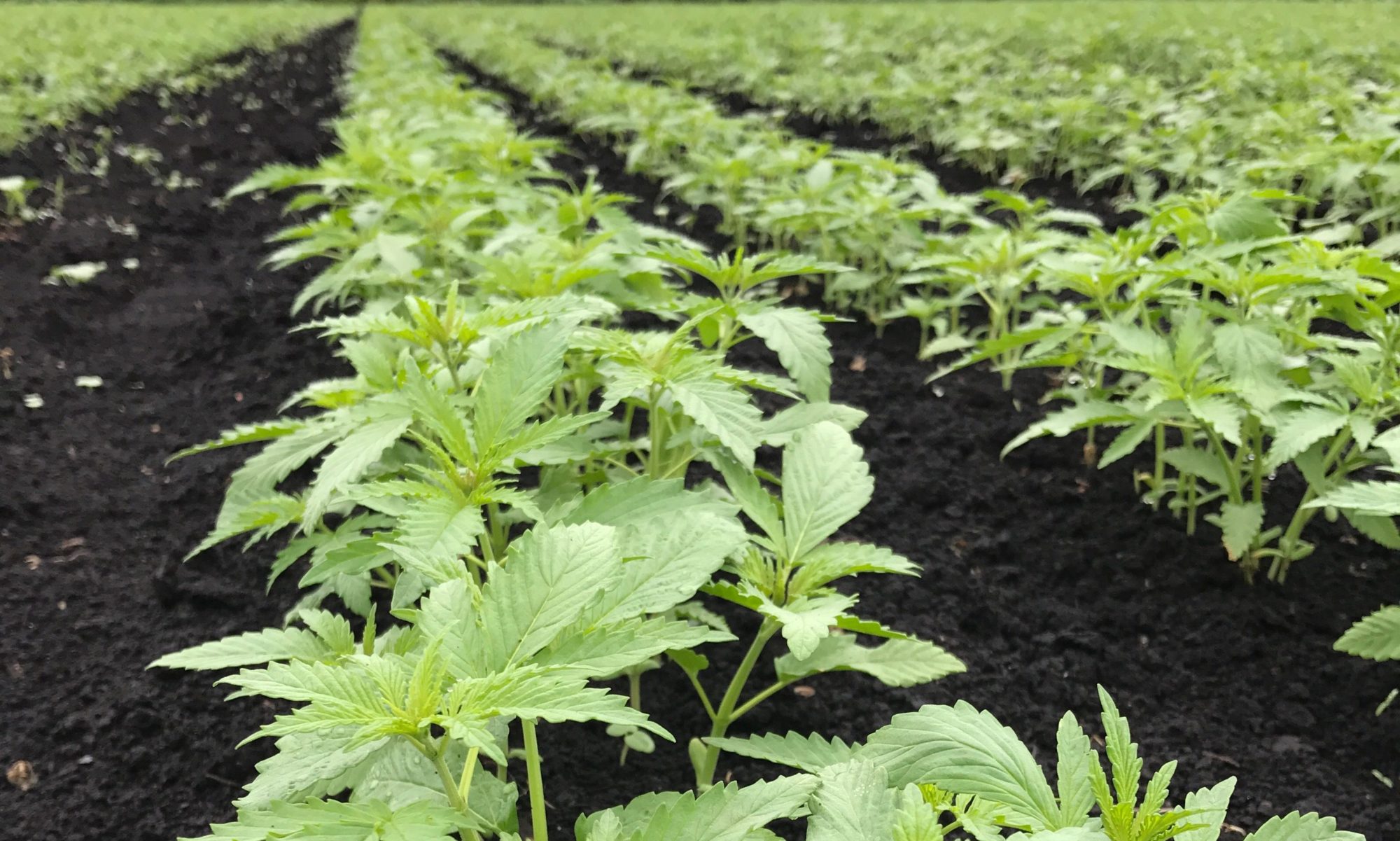FDA PUBLIC HEARING on the Scientific Data and Information about Products Containing Cannabis or Cannabis-Derived Compounds
MAY 31, 2019
Webcast and information on public comments here:
Highlight on Harvesting Equipment
Check Out This site – https://formation-ag.com/
Video: https://youtu.be/gSapLLwJ4bg
Sexing Your Plants- Visual & Testing
Last week, there as an entry about identifying males, females and hermaphrodite pants in a CBD field.
But plants can be DNA tested to determine when the plants are quite small. Check out these labs:
https://www.steephill.com/genkit
https://phylos.bio/plant-sex-test
Powdery Mildew on Hemp

Submitted by Johanna Gertin, Intern

Chances are, if you’re growing hemp in a greenhouse, you have encountered powdery mildew. Powdery mildew is a disease most commonly caused by the fungus Golovinomyces sp. It begins on the leaves of the plants, but can then spread to the stems and buds, contaminating the final product. The disease thrives in high available moisture/humidity and in moderate temperatures between 65 to 70 degrees F. (https://www.alchimiaweb.com/blogen/powdery-mildew-fungus-on-marijuana-plants/)
Options for managing powdery mildew rely on manipulating either the host, pathogen or the environment. Selecting a resistant cultivar can help to decrease the chance of powdery mildew damage, but other methods focused on the pathogen and the greenhouse environment also exist. Sanitation is key for maintaining a pathogen free environment by removing discarded plant material or infected debris. Otherwise, changing the conditions to those that don’t favor powdery mildew can reduce its presence. Maintain the environment at temperature and humidity levels outside of its preferred range. Proper ventilation/air movement along with plant spacing can limit the spread of powdery mildew. No fungicides are currently labeled for powdery mildew in hemp. (http://www.kyhempdisease.com/powdery-mildew-of-hemp.html)
Hemp Lingo!
Wild-Catting: Wild-catting is a term from the tobacco industry that refers to a grower growing crop outside of contract. Essentially, producing a crop without a known buyer.
Hemp Toll Processing: This is when the farmer/producer hires a processor to turn harvested crop into CBD distillates, isolates or other products. This is different than just out-right selling crop to a processor and completing the deal at field edge. In this case, the farmer may take possession of crude*, distillate*, isolate or retail-ready products to take elsewhere to transform it into a product/package that is retail-ready. If hiring such a facility, be sure they have necessary certifications from FDA, NYSDAM, or other such as GMP or organic certification, depending on the what would be required for the type of product they are producing. Also be sure both sides agree, in writing, on the kinds of testing that will be done (and by what lab) before and after processing for contaminants any other compliance test. The farmer should be sure and the processor cooperate on how lots/batches will be segregated and identified through the process so final product is traceable in accordance with the law. Will lots be homogenized (mix batches to have uniform end product)? How will traceability be managed then? Know what the processors efficiency function is. Does their equipment extract 45% of the CBD available in the crop or 89%. If the producer is paying for that extraction the first one is worth roughly half the second.
*Note that these products are concentrated and may surpass the 0.3% and SHOULD NOT cross state lines if they need to be transported to another facility for final processing/packaging.
This update is for your information and research purposes. Cornell Cooperative Extension does not endorse or recommend any product, service, individual, business or other entity.

